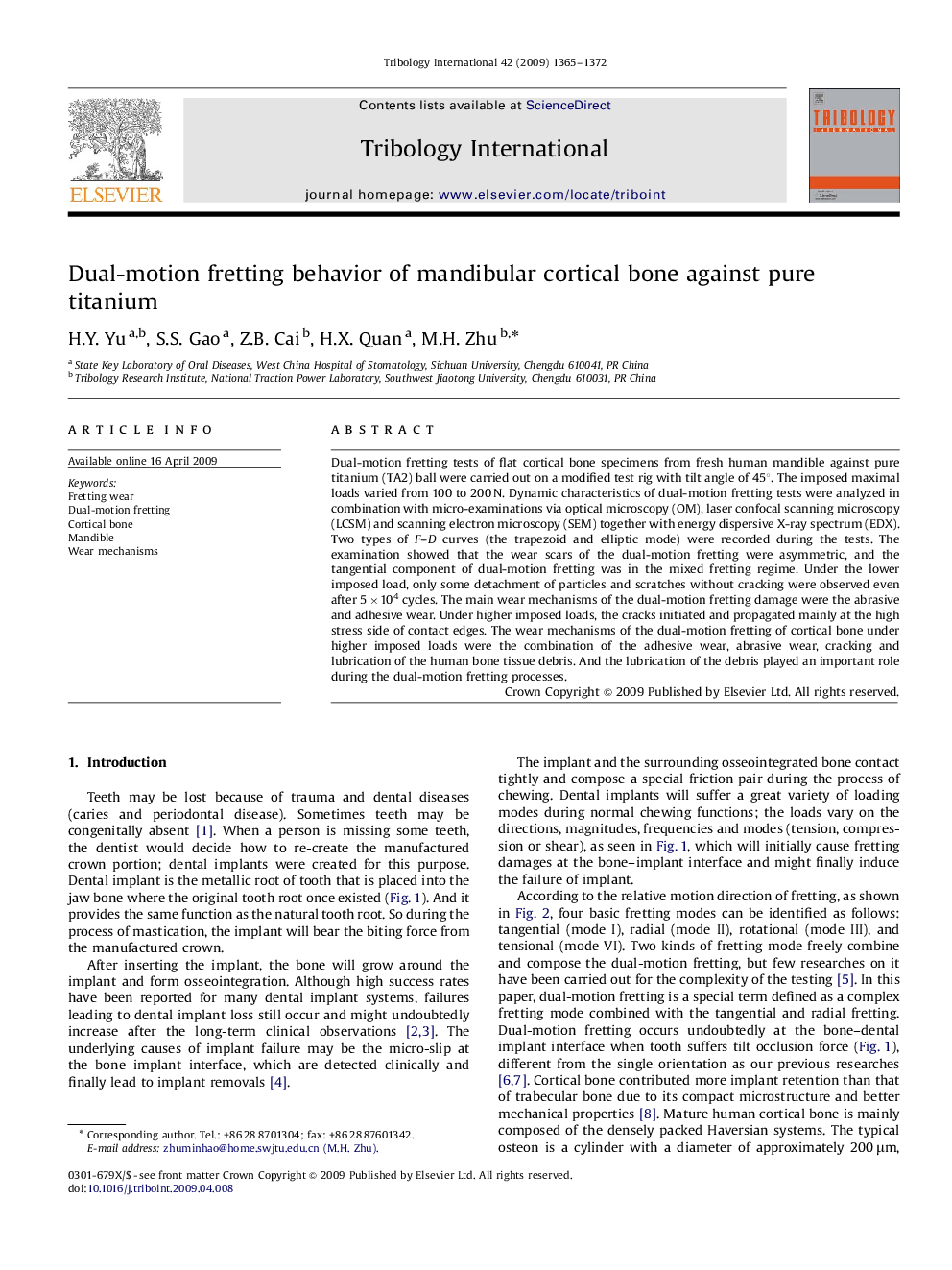| Article ID | Journal | Published Year | Pages | File Type |
|---|---|---|---|---|
| 616138 | Tribology International | 2009 | 8 Pages |
Dual-motion fretting tests of flat cortical bone specimens from fresh human mandible against pure titanium (TA2) ball were carried out on a modified test rig with tilt angle of 45°. The imposed maximal loads varied from 100 to 200 N. Dynamic characteristics of dual-motion fretting tests were analyzed in combination with micro-examinations via optical microscopy (OM), laser confocal scanning microscopy (LCSM) and scanning electron microscopy (SEM) together with energy dispersive X-ray spectrum (EDX). Two types of F–D curves (the trapezoid and elliptic mode) were recorded during the tests. The examination showed that the wear scars of the dual-motion fretting were asymmetric, and the tangential component of dual-motion fretting was in the mixed fretting regime. Under the lower imposed load, only some detachment of particles and scratches without cracking were observed even after 5×104 cycles. The main wear mechanisms of the dual-motion fretting damage were the abrasive and adhesive wear. Under higher imposed loads, the cracks initiated and propagated mainly at the high stress side of contact edges. The wear mechanisms of the dual-motion fretting of cortical bone under higher imposed loads were the combination of the adhesive wear, abrasive wear, cracking and lubrication of the human bone tissue debris. And the lubrication of the debris played an important role during the dual-motion fretting processes.
